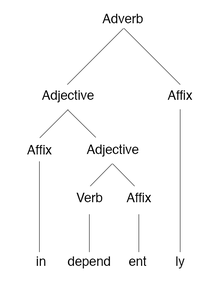It’s the first weekend of the first month of a new decade!
Because it is the first weekend, I will introduce you to another amazing linguist. Today, I decided to go with a professor whose works are well-known in the community of historical linguistics. But, they might be less familiar to those who do not spend most of their life hanging around other historical linguists.
So, today, allow me to introduce you to
Professor Michael L. Samuels.
Professor Samuels was born on September 14, 1920. He tragically passed away on November 24, 2010, having been retired since 1990.
Retired or not, though, Professor Samuels kept working and his publications are among the most cited works in works focused on the English language 1. Quite a feat.
Projects of Professor Samuels that are, perhaps, most well-known are A Linguistic Atlas of Late Medieval English (which I talked about in more detail here) and the Historical Thesaurus of the Oxford English Dictionary.
Having already taken a look at LALME, let’s focus this post on the Historical Thesaurus!
The Historical Thesaurus is a unique, amazing resource. It contains almost every single word in English from Old English to present day!
So, what does it do?
It allows its users to discover synonyms for individual words in the Oxford English Dictionary. Then, you can trace their development throughout the history of the English language!
Samuels had announced the project to the Philological Society in 1965. Forty years later, the dream came true in October 2009, when it was first printed.
Unfortunately, Samuels passed away a mere six days before its launch alongside the Oxford English Dictionary Online. The launch, however, ensured a continued spread of his (and his co-creators/editors) amazing work.
As if these amazing massive projects weren’t enough, Professor Samuels contributed immensely to the study of medieval English through his many publications.
Perhaps most famous is his article “Some applications of Middle English dialectology“, first published in 1963. In it, Professor Samuels outlined four types of written “standards” in late Middle English. The word “standard” here has been problematic and heavily discussed in the linguistic community, but should perhaps be taken with a pinch of salt. (Jeremy Smith introduced a very helpful distinction between a fixed standard and a focused standard. The distinction could perhaps be kept in mind when reading Samuel’s suggested four types, but I won’t get into that now (see the references though).)
Professor Samuels’s contributions to the field of historical linguistics are, without a doubt, substantial, but they may not be as commonly known as other linguistic names, outside the field of historical linguistics itself.
So, when considering the very first Patron Saint of 2020, I felt it is more than appropriate to celebrate the many contributions that Professor Samuels made to the field and, I hope, introduce some of you to a (to you) previously unknown amazing linguist!
Hats off to Professor Samuels,
the first Patron Saint of 2020,
here at the HLC!
.
References
Michael Samuels obituary by Christian Kay (15 Dec, 2010)
Michael Samuels at the Historical Thesaurus of English
Michael Samuels in University News, June 2006, University of Glasgow
The Historical Thesaurus of the OED
Samuels, M.L. 1963. Some applications of Middle English dialectology. English Studies. 44: 1-6. 81-94. DOI: 10.1080/00138386308597155
Smith, Jeremy J. 1996. An Historical Study of English: Function, Form, and Change. Routledge. ISBN 9780415132725



